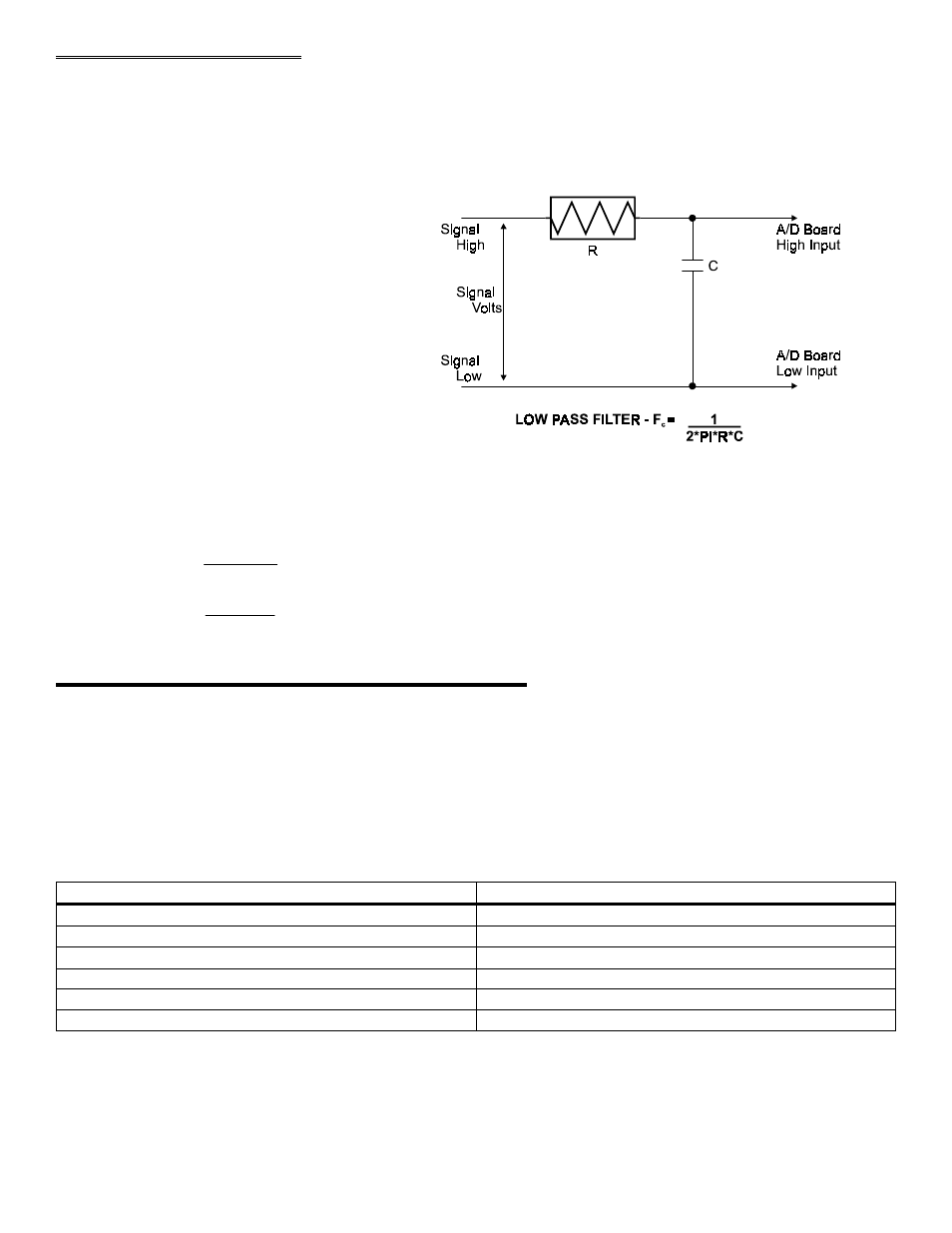3 low pass filters, 4 a/d resolution & engineering units – Measurement Computing CIO-DAS16/330 User Manual
Page 29

6.3 LOW PASS FILTERS
A low pass filter is placed on the signal wires between a signal and an A/D board. It stops frequencies greater than the
cut-off frequency from entering the A/D board's analog or digital inputs.
The key term in a low pass filter circuit is cut off frequency. The cut-off frequency is that frequency above which no
variation of voltage with respect to time may enter
the circuit. For example, if a low pass filter had a
cut off frequency of 30 Hz, the kind of
interference associated with line voltage (60 Hz)
would be filtered out but a signal of 25 Hz would
be allowed to pass.
Also, in a digital circuit, a low pass filter might be
used to de-bounce an input from a mechanical
switch.
A low pass filter may be constructed from one
resistor (R) and one capacitor (C) (Figure 6-5).
Figure 6-5. Low Pass Filter
The cut-off frequency is determined according to the formula:
R = 1
2*Pi*C*F
c
F
c
= 1
2*Pi*R*C
6.4 A/D RESOLUTION & ENGINEERING UNITS
Resolution is determined by the number of bits of data, such as 8, 10 or 12 bits. The 12 bits are a power of two indicating
the number of divisions of full scale the converter can resolve. For example, a 12-bit converter can resolve (2^12 - 1) =
4095 divisions of full scale. If the input of the board were +/- 5 volts full scale (10V span), each of the 4095 steps is
equal to 0.00244 volts (10/4096).
Examples of readings from a 12 bit A/D converter are in Table 6-1.
Table 6-1. Examples of Converter Output vs Input Volts
-5.0
0
-4.9976
1
0.0
2048
4.9927
4093
4.9951
4094
4.9976
4095
Volts
Converter #
The specification of resolution is the ability to differentiate between one voltage and another. Thus, the more bits of
resolution (13 bits = 8192 counts), the more divisions of full scale. The more divisions of full scale, the higher the
resolution
25
